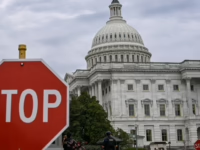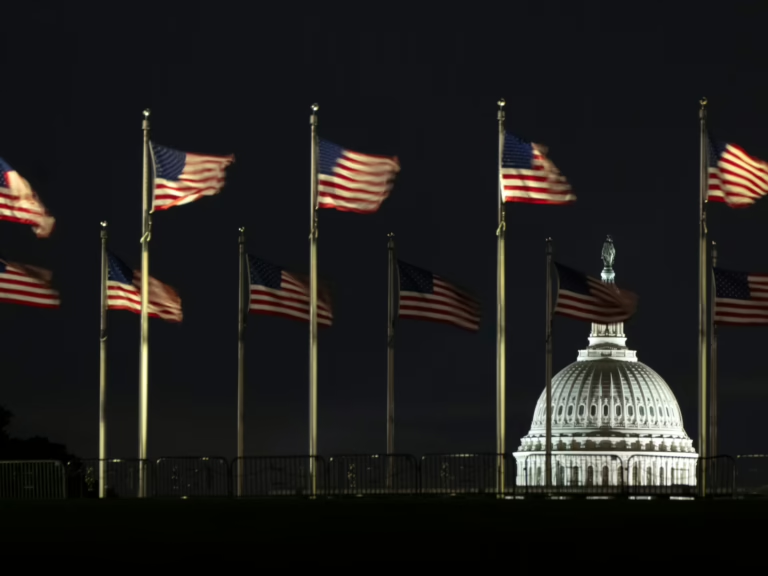At 12:01 a.m. Eastern Time (04:01 GMT) on Wednesday, the United States federal government entered a shutdown after Congress failed to approve a new appropriations bill, resulting in the suspension of nonessential government functions.
President Donald Trump has indicated he may leverage this budget impasse to initiate widespread federal workforce reductions.
The divide between Democrats and Republicans centers on budget priorities: Democrats aim to safeguard healthcare, social welfare programs, and foreign aid, while Republicans insist on spending cuts.
Government shutdowns are not unprecedented in Washington. The infographic below chronicles every U.S. government funding lapse and shutdown since 1976, detailing their durations and the administrations under which they occurred.
Understanding a Government Shutdown
A government shutdown occurs when Congress fails to pass a budget or a temporary funding measure, compelling the federal government to halt operations deemed nonessential until a spending agreement is reached.
These shutdowns frequently take place in October, coinciding with the start of the federal fiscal year, which runs from October 1 through September 30.
Frequency of Government Shutdowns
Since the establishment of the current budget framework in 1976, the U.S. government has experienced 20 funding gaps, leading to 10 official shutdowns.
A funding gap arises when Congress misses the deadline to enact either a full budget or a continuing resolution, leaving the government without authorized spending power.
- Multiple funding gaps can occur within a single shutdown if temporary funding expires before a permanent deal is finalized.
- A shutdown is only declared if government activities are actually suspended due to the funding lapse.
Prior to the 1980s, funding gaps rarely caused shutdowns; agencies typically continued operations under the assumption that funding would soon be restored.
This changed after 1980 when Attorney General Benjamin Civiletti issued legal opinions clarifying that federal agencies cannot expend funds without congressional approval, except for essential services such as national defense, law enforcement, and air traffic control.
Since 1982, this legal interpretation has led to more frequent full or partial government shutdowns during budget disputes.
Most Recent Government Shutdown
The latest shutdown took place from December 2018 to January 2019, triggered by a deadlock between President Trump and Democratic lawmakers over his demand for $5 billion to fund a border wall along the U.S.-Mexico border, which Democrats opposed.
Longest Government Shutdown in History
This shutdown also holds the record for the longest in U.S. history, lasting 35 days-from December 22, 2018, until January 25, 2019-when President Trump announced a temporary agreement to reopen the government for three weeks while border wall negotiations continued.
Impact of a Government Shutdown
During a shutdown, federal agencies suspend or reduce nonessential services, and many government employees are furloughed, meaning they are placed on unpaid leave.
Essential workers-including military personnel, law enforcement officers, and air traffic controllers-must continue their duties, often without immediate pay until funding is restored.
Resolving Government Shutdowns
Typically, shutdowns end when Congress passes a continuing resolution, a temporary funding measure that allows government operations to resume while longer-term budget negotiations proceed.
Since 1990, every government shutdown has concluded with the enactment of such a resolution.
Services Affected by Shutdowns
Shutdowns primarily disrupt nonessential federal employees and the public and businesses that depend on government services.
The federal government is the largest employer in the country, with over 3 million workers as of November, representing about 1.9% of the civilian labor force, according to Bureau of Labor Statistics data cited by the Pew Research Center.
The Congressional Budget Office projects that if a funding lapse occurs in fiscal year 2026, approximately 750,000 federal workers could be furloughed daily, resulting in lost wages totaling around $400 million per day. These figures may fluctuate as agencies adjust furloughs over time.
Previous shutdowns have impacted a variety of services, including:
- National parks and historical monuments
- Federal museums
- Government-funded research initiatives
- Processing of certain social benefits
- IRS taxpayer assistance
Services That Continue During a Shutdown
Despite shutdowns, many critical government functions remain operational. Some are deemed essential for public safety and welfare, while others are financed through mandatory or self-sustaining programs independent of the annual budget process. These include:
- Social Security and Medicare payments
- Military and federal law enforcement activities
- United States Postal Service operations
- Air traffic control services
- U.S. Passport Agency functions
























